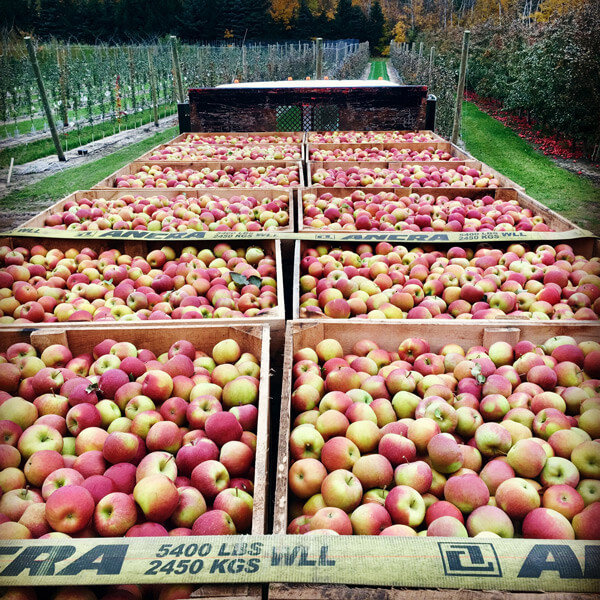- Sweet flavor
- Greater apple density
- Crispy, breaking texture similar to Honeycrisp, but slightly harder
- Ripens mid-October
- Resembles Fuji in shape and appearance
- Long picking window
- Long storability
MAIA-1 was first released by MAIA in 2014, following the successful controlled cross between Honeycrisp and Fuji apples. This innovative variety set the stage for future advancements in apple cultivation with its crispy texture, sweet flavor and long shelf life. The original MAIA-1 seedling tree can be found in Wabash, Indiana.
MAIA-Mitchell emerged as an early coloring limb mutation, discovered by Bill Pitts in Wayne County, NY in 2018. This revolutionary chili red apple begins developing color up to 8 weeks earlier than MAIA-1. Each apple colors from 88% to full color with a stunning red hue and harvests approximately the same time as MAIA-1.
You can expect the same exceptional qualities found in MAIA-1, including a superior crunchy texture, maximum juiciness, and unparalleled flavor. MAIA-Mitchell’s fruit, which meets strict quality standards, will be marketed as EverCrisp®.

